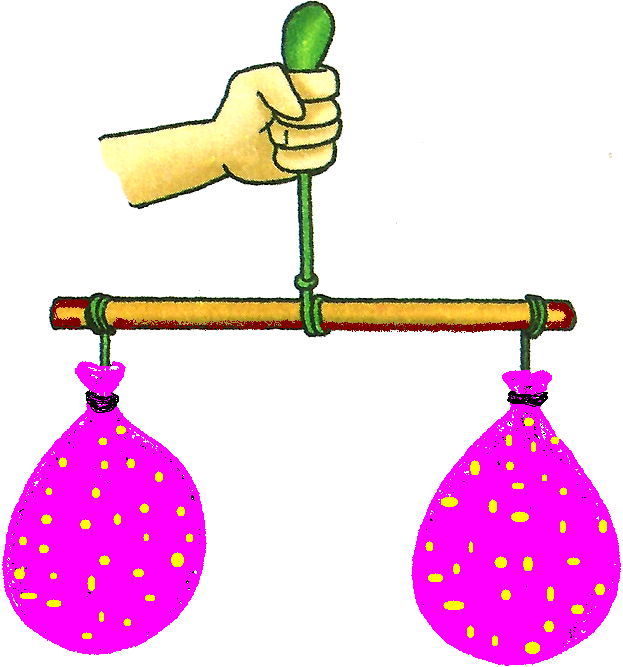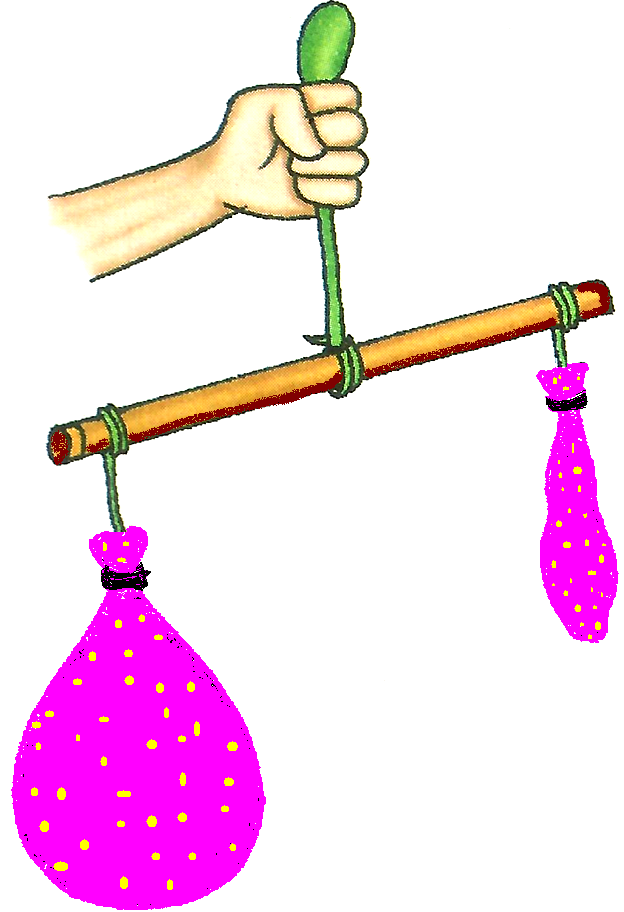Wind, Storm and Breeze
In moving air we will learn about wind, storm and breeze.
We can feel the air when you run, cycle or swing. This is because the air is moving against your face.
Nancy liked to play with balloons. She filled one with water. It got bigger as the water in it needed space.
Nancy took another balloon. She blew into it and filled the balloon with air. She kept the balloon near her face and opened it. She could not see the air but she can fell it. Yet it took up space inside the balloon. That is why it became bigger.
|
Then she blew up two balloons using a cycle pump. She tied the two balloons to the two ends of a stick. Using a pin, she pricked one of the balloons. The air leaked out from the balloon. The balloon became smaller. It looked just like a thin skin. The stick came down on one side. One balloon still had air inside it. That is why it was heavier. Although we cannot see the air but it has weight. |
Air is all around us. We cannot see or touch it, but we can feel it when it moves. For example, make a paper fan and wave it near your face. We can feel the air.
What is wind?
Moving air is called wind. We come to know there is a wind, when a wind makes things move. It makes a kite fly. It moves clouds in the sky.
Moving air (wind) can make the things like kite, sail boat and windmill work.
What is breeze?
A gentle wind or when the wind blows slowly, it is called a breeze.
We can find out the direction of the wind. We can do an experiment; take some sand in your hand. On releasing the sand, it falls in the direction of the wind.
What is storm?
Fast and strong winds cause a storm. A storm can blow away things. Storms can damage buildings. They can uproot trees and spoil crops. They can also cause damage to plants, animals and human beings.
What is gale?
A very strong wind is called a gale. Strong gales can uproot the plants and cause a lot of damage.
A windvane tells us the direction of the wind. The beak of the cock in the windvane points the way in which the wind blows.
We know, winds can be useful too. On a hot day, a breeze keeps us cool. That is why we use coolers and fans in summer. A wind helps washed clothes dry quickly. Winds can carry light seeds to new places. There, they become new plants. Winds turn the fans on windmills. These can make electricity.
From Wind, Storm and Breeze to HOME PAGE
Recent Articles
-
What Is Plasma? | Blood Plasma | Proteins | Nutrients | Cholesterol
Nov 07, 25 10:29 AM
Blood is a mobile fluid which is a connective tissue and is derived from the mesoderm like cell any other connective tissue. Colour of blood is reddish and that flows inside the blood vessels by means… -
Disorders of Respiratory System | Tuberculosis | Pleurisy | Emphysema
Oct 28, 25 11:39 PM
Tuberculosis is very common disease and is caused by a type of bacteria called Mycobacterium tuberculosis. This disease causes different trouble in the respiration and infection of several parts of th… -
Regulation of Respiration | Respiratory Centres | Inspiratory Area |
Oct 14, 25 12:13 AM
Respiratory Centre is the area that controls the rate of respiration and it is observed to be located in medulla oblongata and pons. Respiratory Centre has the following will dispersed components like… -
Explain Transport of Gases | External Respiration | Tissue Respiration
Oct 09, 25 11:35 PM
In humans gaseous exchange is completed in the following ways the steps are - External Respiration or Breathing - Breathing in false taking in of Oxygen and giving out of carbon dioxide in the body. M… -
Kind and Number of Teeth | Location of Teeth in Mouth | Care of Teeth
Sep 11, 25 12:52 AM
Kind and Number of Teeth







New! Comments
Have your say about what you just read! Leave me a comment in the box below.